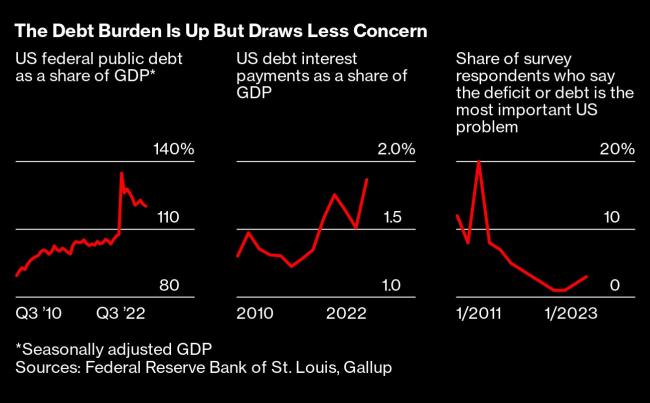House Republicans Want Government Credit to Take Priority If Debt Limit Is Breached

(Bloomberg) — House Republicans proposed ordering the US Treasury to prioritize payments on publicly held government debt and to Social Security beneficiaries in the event Congress fails to lift the federal debt limit.
The Ways and Means Committee on Thursday debated the measure, which is expected to be cleared by the panel on a party-line vote. Democrats rejected the maneuver, calling on Republicans instead to raise or suspend the debt ceiling without conditions.
The two parties remain at an impasse over the debt limit, months before the Treasury is expected to hit the so-called X-date — when the it won’t have enough funds to meet all federal obligations. President Joe Biden has dismissed Speaker Kevin McCarthy’s push to tie a debt-limit increase to reductions in federal spending.
Thursday’s move by the GOP is aimed at spelling out what the Treasury should do if it goes past X-date, allowing the department to take on new debt only for explicit purposes. The plan would ensure that interest and principal payments on the $24 trillion of publicly held debt would continue, helping avert a devastating default in the world’s biggest bond market.
Even so, Fitch Ratings is among those that have warned that delaying federal payments on other obligations could still impair the sovereign US credit rating. And Treasury officials publicly have long rejected the idea of prioritization, saying that it’s unworkable as the department’s systems aren’t designed for that.
After servicing public debt and Social Security obligations, the legislation directs the Treasury to prioritize veterans benefits and Department of Defense spending, and prohibits payments for government travel and compensation for members of Congress, the president and vice president and political appointees until all other payments have been made.
Democrats in Thursday’s hearing repeatedly highlighted the federal programs that would go unfunded while the US prioritized payments to investors, including Chinese holders of US Treasuries. Anything not specifically enumerated in the bill would be in a third tier of priority — including medical research, housing assistance and a slew of other government programs.
Read more: Yellen Warns of Recession as Inevitable If US Defaults on Debt
After announcing in January that the US had reached the $31.4 trillion statutory debt limit, the Treasury began using special accounting measures to keep making payments. How long those measures will last depends in part on the amount of revenue the Treasury will take in next month, when federal tax filings on 2022 income are due. Budget analysts are penciling in an X-date for the summer or early fall.
Read More: US Federal Debt Limit Must Be Raised by Summer in BPC’s Model
California Republican Tom McClintock, the sponsor of the payments-prioritization bill, last introduced the idea in 2015, and argued it would protect the country’s full faith and credit. The 2015 measure passed the House by a vote of 235-194 but didn’t make it to the Senate floor.
Rather than spending cuts, the Biden administration favors boosting revenue to address longer-term fiscal challenges. The White House on Thursday released its 2024 budget proposal — a document expected to go nowhere in a Republican-majority House but one that outlines his spending priorities. The president’s plan aims to cut the federal deficit by $3 trillion over the next decade.
©2023 Bloomberg L.P.








